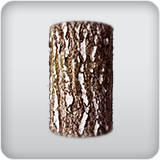Valentine's Day Terrarium Workshop
Register Now

Dragon's Eye Japanese Red Pine
Pinus densiflora 'Oculus Draconis'
Height: 30 feet
Spread: 25 feet
Sunlight:

Hardiness Zone: 5a
Description:
One of the most unique plants you will ever encounter, a medium-sized tree which has needles with two prominent yellow bands; looking down at the branch tip gives the impression of an eye, quite a conversation piece; otherwise, an all-round nice tree
Ornamental Features
Dragon's Eye Japanese Red Pine is primarily valued in the landscape for its ornamental globe-shaped form. It has attractive emerald green foliage with yellow stripes. The needles are highly ornamental and turn chartreuse in the fall, which persists throughout the winter. The shaggy brown bark is extremely showy and adds significant winter interest.
Landscape Attributes
Dragon's Eye Japanese Red Pine is an evergreen tree with a strong central leader and a more or less rounded form. Its relatively fine texture sets it apart from other landscape plants with less refined foliage.
This is a relatively low maintenance tree. When pruning is necessary, it is recommended to only trim back the new growth of the current season, other than to remove any dieback. It has no significant negative characteristics.
Dragon's Eye Japanese Red Pine is recommended for the following landscape applications;
- Accent
- Shade
Planting & Growing
Dragon's Eye Japanese Red Pine will grow to be about 30 feet tall at maturity, with a spread of 25 feet. It has a low canopy with a typical clearance of 3 feet from the ground, and should not be planted underneath power lines. It grows at a slow rate, and under ideal conditions can be expected to live for 80 years or more.
This tree should only be grown in full sunlight. It prefers dry to average moisture levels with very well-drained soil, and will often die in standing water. It may require supplemental watering during periods of drought or extended heat. It is not particular as to soil type, but has a definite preference for acidic soils. It is highly tolerant of urban pollution and will even thrive in inner city environments. This is a selected variety of a species not originally from North America.



 Characteristics
Characteristics

 Applications
Applications



 Features & Attributes
Features & Attributes